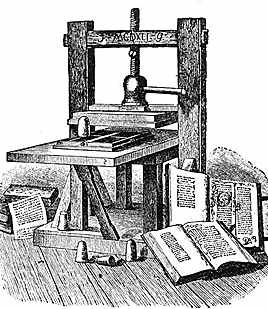
I recently came across a record of my first ever foray into the world of Business Intelligence, which dates back to 1997. This was when I was still predominantly an ERP person and was considering options for getting information out of such systems. The piece in question is a brief memo to my boss (the CFO of the organisation I was working at then) about what I described as the OLAP market.
This was a time of innocence, when Google had not even been incorporated, when no one yet owned an iPod and when, if you tried to talk to someone about social media, they would have assumed that you meant friendly journalists. All this is attested to by the fact that this was a paper memo that was printed and circulated in the internal mail – remember that sort of thing?
Given that the document has just had its twelfth birthday, I don’t think I am breeching any confidences in publishing it, though I have removed the names of the recipients for obvious reasons.
| INTERNAL MEMORANDUM | |
|
|
|
| To: | European CFO |
| cc: | Various interested parties |
| From: | Peter Thomas |
| Date: | 16th June 1997 |
| Subject: | What is OLAP? |
|
|
|
On-Line Analytical Processing (OLAP) is a category of software technology that enables analysts, managers and …

I recently came across a record of my first ever foray into the world of Business Intelligence, which dates back to 1997. This was when I was still predominantly an ERP person and was considering options for getting information out of such systems. The piece in question is a brief memo to my boss (the CFO of the organisation I was working at then) about what I described as the OLAP market.
This was a time of innocence, when Google had not even been incorporated, when no one yet owned an iPod and when, if you tried to talk to someone about social media, they would have assumed that you meant friendly journalists. All this is attested to by the fact that this was a paper memo that was printed and circulated in the internal mail – remember that sort of thing?
Given that the document has just had its twelfth birthday, I don’t think I am breeching any confidences in publishing it, though I have removed the names of the recipients for obvious reasons.
| INTERNAL MEMORANDUM | |
|
|
|
| To: | European CFO |
| cc: | Various interested parties |
| From: | Peter Thomas |
| Date: | 16th June 1997 |
| Subject: | What is OLAP? |
|
|
|
On-Line Analytical Processing (OLAP) is a category of software technology that enables analysts, managers and executives to gain insight into data. This is achieved by providing fast, consistent, interactive access to a wide variety of possible views of information. This has generally been transformed from raw data to reflect the real dimensionality of the enterprise.
There are around 30 vendors claiming to offer OLAP products. A helpful report by Business Intelligence[1] (an independent research company) estimates the market share of these . As many of these companies sell other products, the following cannot be viewed as 100% accurate. However the figures do provide some interesting reading.
| Vendor |
1996 |
1995 |
||
|
Market Position |
Share (%) |
Market Position |
Share (%) |
|
| Oracle |
1 |
19.0% |
1 |
20.0% |
| Hyperion Software |
2 |
18.0% |
2 |
19.0% |
| Comshare |
3 |
12.0% |
3 |
16.0% |
| Cognos |
4 |
9.0% |
4 |
5.0% |
| Arbor Software |
5 |
4.8% |
7 |
2.9% |
| Holistic Systems |
6 |
4.3% |
6 |
4.7% |
| Pilot Software |
7 |
4.0% |
5 |
4.8% |
| MircoStrategy |
8 |
3.5% |
9 |
2.1% |
| Planning Sciences |
9 |
2.6% |
8 |
2.3% |
| Information Advantage |
10 |
1.8% |
10 |
1.4% |
In this group, some companies (Hyperion, Comshare, Holistic, Pilot Software and Planning Services) provide either complete products or extensive toolkits. In contrast some vendors (such as Arbor and – outside the top ten – Applix) only sell specialist multi-dimensional databases. Others (e.g. Cognos and – outside the top ten – BusinessObjects and Brio Technology), offer client based OLAP tools which are basically sophisticated report writers. The final group (including MicroStrategy and Information Advantage) offer a mixed relational / dimensional approach called Relational OLAP or ROLAP.
If we restrict ourselves to the “one-stop solution” vendors in the above list, it is helpful to consider the relative financial position of the top three.
| Vendor |
Market Cap.[2] ($m) |
Turnover ($m) |
Profit ($m) |
| Oracle |
32,405 |
4,223[3] |
603 |
| Hyperion Software |
335 |
173[4] |
9 |
| Comshare |
132 |
119[5] |
(9) |
| [1] | The OLAP Report by Nigel Pendse and Richard Creeth © Business Intelligence 1997 |
| [2] | As at June 1997 |
| [3] | 12 months to March 1997 |
| [4] | 12 months to June 1996 |
| [5] | 12 months to June 1996 |
It is of course also worth pointing out that I used to disagree with what Nigel Pendse wrote a lot less back then!
| Tweet this article on twitter.com | |
| Bookmark this article with: | |||||
| | |
| |
| |
| |
||
Posted in business, business intelligence, businessobjects, cognos, hyperion, oracle, technology Tagged: OLAP